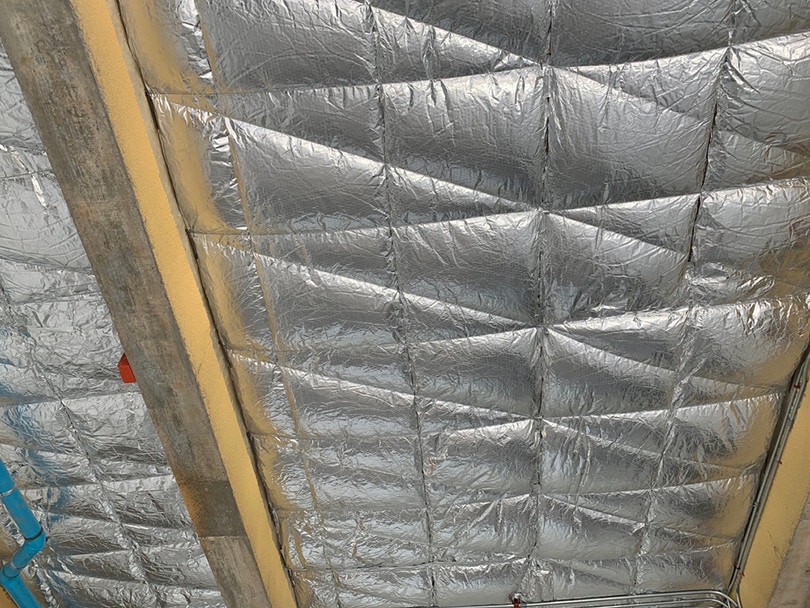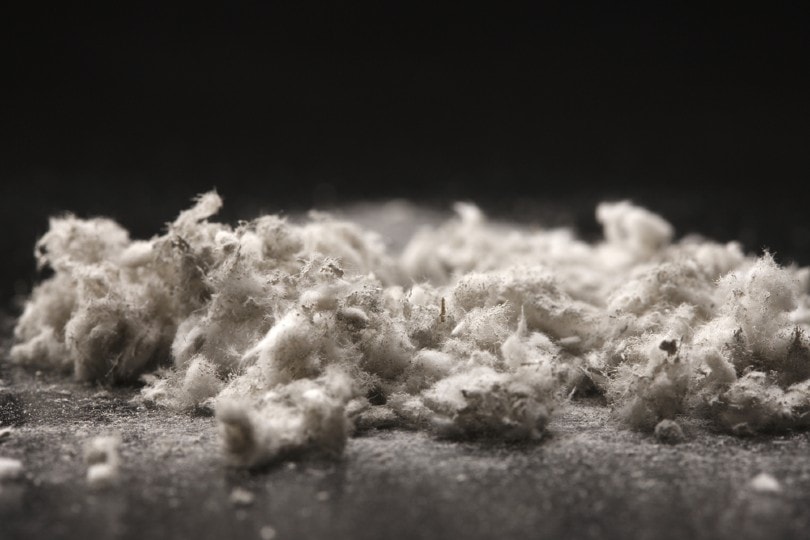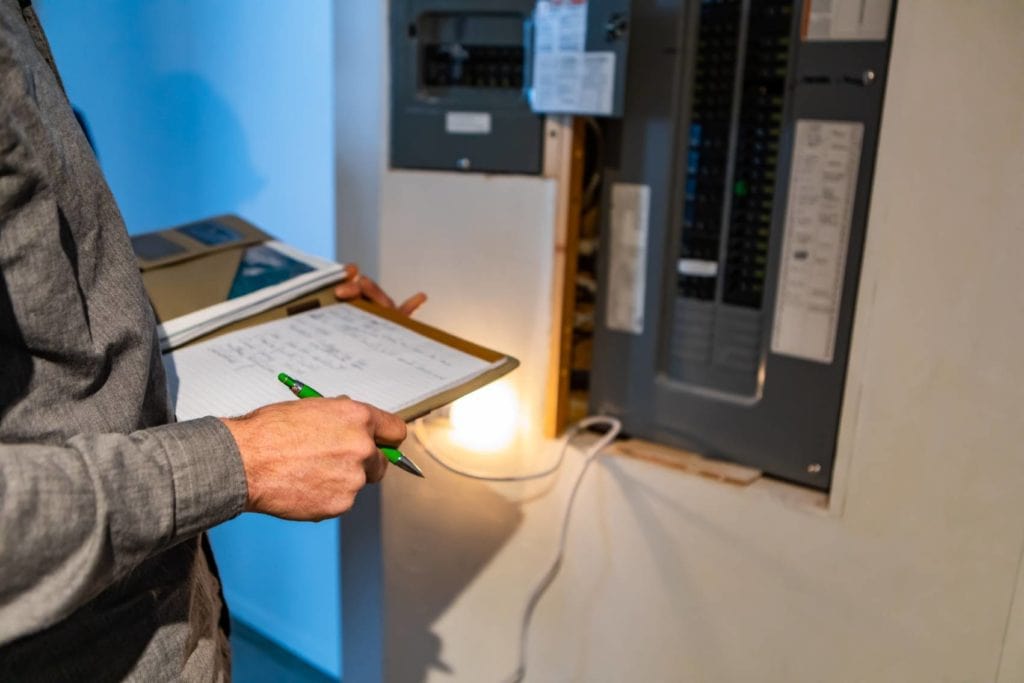Do Home Inspections Check for Asbestos? Reasons, Factors, & FAQ
-
Pete Ortiz
- Last updated:

Purchasing a new home or selling an old one can be a very overwhelming experience. One must go through the hassle of home inspections to evaluate the condition of the property. This is necessary for any real estate transaction. One area that is often overlooked is asbestos. A common question among homeowners is: Do home inspections check for asbestos? identifying this product is quite difficult for the naked eye, Therefore, they can only offer an educated guess based on factors such as construction materials and the age of the house.
In this article, we will discuss what asbestos is and why it is often overlooked in home inspections. We will also tell you when to get an asbestos inspection, where to find an inspector, how much it costs, and what you need to do if asbestos is present in your home. Read on to learn more.
 What Is Asbestos?
What Is Asbestos?
Asbestos is a type of mineral fiber that is fireproof and virtually indestructible. Due to these properties, asbestos has had applications in the construction industry for many years. It was added to various products to strengthen them and provide heat insulation. However, the use of asbestos was banned when the negative health repercussions were exposed in the early 1980s.
Despite the well-documented effects that asbestos has on humans and animals, it’s still used in some countries. It can also be traced to buildings built before 1980 and in metropolitan areas.

Does a Home Inspection Include Checking for Asbestos?
Asbestos is a harmful material with adverse effects on the environment and human health. However, identifying this product is quite difficult for the naked eye. You need a microscopic examination to determine whether your roofing and insulation materials consist of this toxic compound. Therefore, asbestos professionals must take samples to properly identify asbestos.
Sure, home inspections can identify asbestos in a home. However, identifying and recognizing the material is not within the scope of home inspections. Once a home inspector suspects that asbestos is present in your property, they can recommend further analysis and evaluation. However, the inspector is not legally obliged to confirm or deny the presence of asbestos on your property. They can only offer an educated guess based on factors such as construction materials and the age of the house.
Unfortunately, that is as far as home inspectors are willing to go. They do not offer additional services such as asbestos removal and containment.
Why Is Asbestos Overlooked by Home Inspectors?
A typical home inspection involves the evaluation of the home structure. It can take about 3 hours for an inspector to analyze the property in detail. In many cases, the home inspector often avoids hard-to-reach areas that will require the presence of an expert to reduce the chances of a liability claim if things go awry.
- Plumbing: Including the supply line, vent stacks, main sewer line, water heater, and waste line.
- Roof: Flashings, drainage, and openings to the roof.
- Electric: Including the wire, GFCI conditions, and main breaker panel.
- HVAC System: Includes your thermostats, air filters, heating, cooling, and distribution systems.
- Exterior: Including porches, patios, walkways, decks, and main home structure.
- Garage: Including garage door openers, garage door, and the whole garage structure.
- Basement, built-in-appliances, attic space, fireplaces, and safety hazards
As earlier mentioned, you cannot perceive asbestos using your senses alone. Therefore, samples must be taken to a laboratory for further analysis using a Microscope. Sometimes, a home inspector may detect the presence of asbestos from experience. However, the best way to determine its presence is by taking a sample. This usually entails cutting through walls, roofs, and floors in areas suspected of containing this toxic material. Asbestos testing will more than likely negatively impact the sale and value of any property.

When to get an Asbestos Inspection
According to asbestos experts, the best thing you can do when you detect asbestos in your premises is to leave it undisturbed. This limits the chances where you might want to get an asbestos inspection in your home.
- If you suspect a feature of your property contains asbestos and is damaged or deteriorating, then you should look for an asbestos inspector. This feature could include vinyl tiles, popcorn ceilings, or pipe insulation made from asbestos and appears to be in a bad shape.
- Also, if you are planning a major house renovation and you need to determine whether your home is made from asbestos materials before modifying or removing them.
These are the main conditions in which asbestos can cause serious health risks to pets and members of your household. Also, it’s best to confirm whether an asbestos inspection is covered in your home warranty because if the toxic material is present, the homeowners can rest assured knowing that the repairs and replacement would be catered for.
Where Can One Find an Asbestos Inspector?
The Environmental Protection Agency (EPA) recommends that before purchasing or selling property, you should contact your state officials or perform a simple Google search to find certified asbestos experts in your region.
After finding listed experts, consider reading their reviews and contacting the inspector to ascertain whether they have a valid license and whether they meet any local or federal requirements to operate. Besides being EPA certified, the inspectors should have at least several references for similar asbestos inspection jobs that they have completed to make sure that they are a good fit for you.
Alternatively, you could opt to do the asbestos testing yourself and send samples to a laboratory for testing. However, doing your own testing is risky because even removing a small piece of the wall for testing is dangerous, and you might need an N95 mask and eye protection while testing. However, it’s usually safest to leave asbestos undisturbed and any other repair actions to the experts.

How Much Does It Cost?
The cost of removing or replacing asbestos materials in your home varies by location. However, the standard charges for asbestos inspection and analysis typically range from $120–$180 for off-site testing. However, if you need on-site testing, you may need between $250–$750. If the initial testing determines asbestos is present in your home, it may cost you between $400–$800.
If the inspector suspects asbestos materials are present in your home, they may recommend additional air monitoring tests. The tests will likely cost you between $300–$1,200. But generally speaking, the national average cost of asbestos inspections and removal will set you back between $1,000 and $2,000 (national average), depending on the size and accessibility of the place that needs removal.
What to Do if You Confirm Asbestos in the Home
If a home inspector ascertains the presence of asbestos in your home, but the presence is only limited to a few sections of your house, most will recommend you leave it alone. Attempting to remove the material will likely disturb the fibers, releasing the particles and thus contaminating your home.
If you have determined that the asbestos is damaged, then you need to remove and replace the components the materials are used for. You can undertake removal or containment of the material.
1. Containment

In many instances, you may not need to remove the asbestos materials from your home. You could simply employ containment measures to make your home safe. These measures are suitable if the material is not widespread and has been left undisturbed for a while. Containment is the least intrusive remedy to asbestos in a home.
During this process, you simply need to seal the surface containing asbestos using an adhesive mixture referred to as the adhesive matrix. This adhesive usually prevents the asbestos material fibers from getting airborne. Alternatively, you could contain asbestos by installing a sleeve over the asbestos in Pipe insulations. Generally, containing asbestos will cost about 15%–25% less than what it would cost you to remove asbestos from your property.
2. Removal
This process involves hiring a trained asbestos expert to expunge your home from these toxic materials. While carrying out this process, the house must be emptied and sealed to prevent the airborne fibers from spreading further into your home. Unfortunately, asbestos removal costs are often not covered by most home insurance policies. This is because the material is usually considered a pollutant, and thus excluded from homeowner’s insurance claims.
Despite the costs, removal is the best course of action and is the best long-term choice when dealing with asbestos.
Conclusion
Asbestos might have gained popularity as a construction material a few decades ago but it is a toxic material, especially when exposed to humans and animals. Despite its obvious negative effects, it’s still present in old homes and as such, it’s vital to perform an asbestos inspection before buying or selling a home.
If you do get asbestos on your property, do not panic. So long as you know the conditions where the materials will be dangerous, you can take the right protective actions to protect your loved ones and your property value.
- https://www.nelsonmacneil.com/blog/how-identify-asbestos-home-and-workplace/
- https://www.cpsc.gov/safety-education/safety-guides/home/asbestos-home
- https://www.asbestos.com/exposure/home/
- https://www.asbestos123.com/news/asbestos-testing-process-costs-testing-companies/
- https://semperfihomeinspections.com/do-you-check-for-asbestos-during-a-home-inspection/
Featured Image Credit: Sean Locke Photography, Shutterstock
Contents

 What Is Asbestos?
What Is Asbestos?